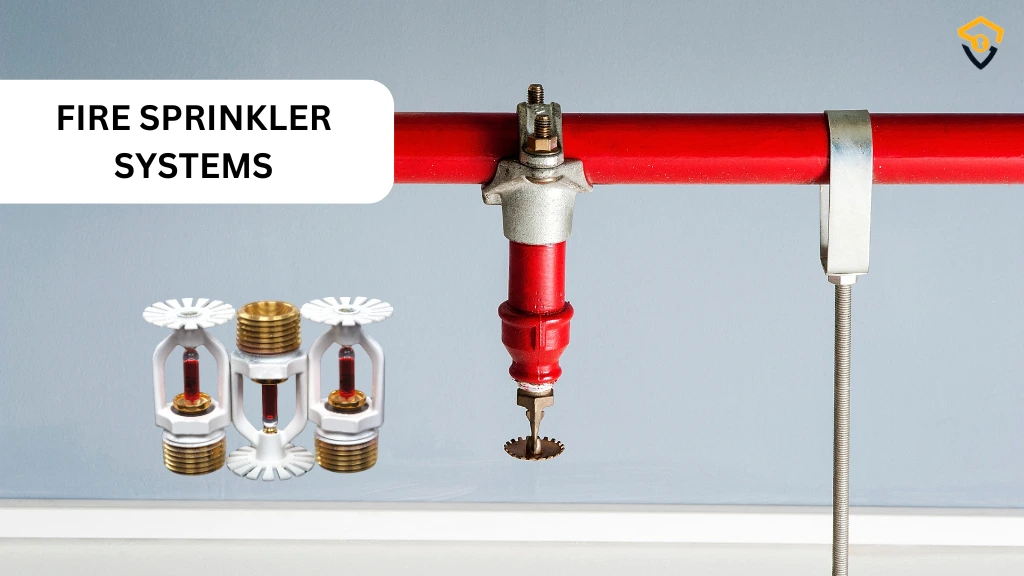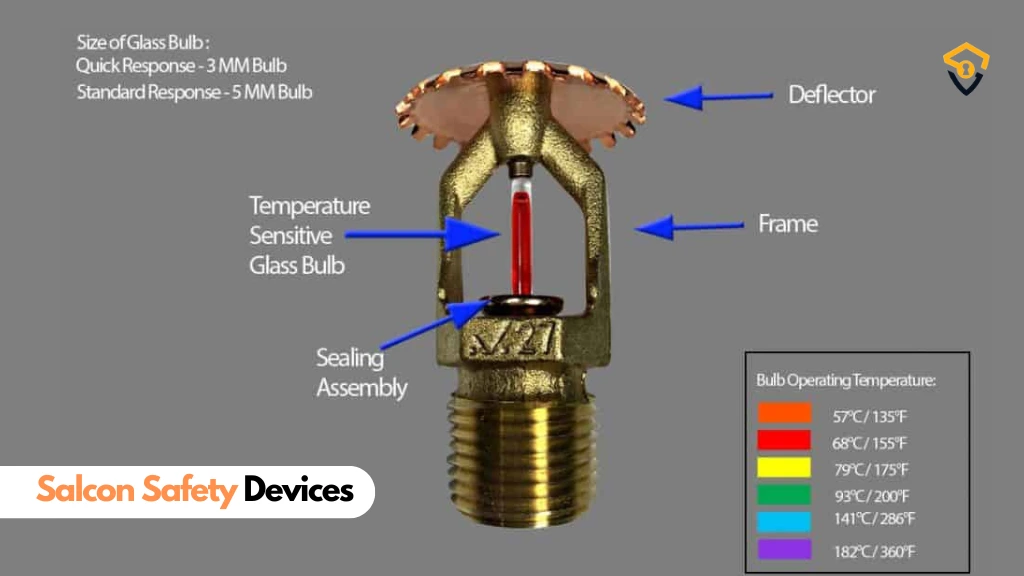
Fire Sprinkler System: The Essential Guide to Fire Safety
Fire safety is important for every building, whether it's a home, office, or factory. A fire sprinkler system is one of the best ways to protect people and property from fire.
This system is more than just pipes and nozzles; it's a critical tool for saving lives and reducing damage. This guide will explain everything about fire sprinkler systems.
It will cover their importance, how they work, the types available, and how to maintain them.
What is a fire sprinkler system?
A fire sprinkler system is an active way to protect against fires. Its water supply system must deliver water through a network of pipes. It needs enough pressure and flow to do this.
Fire sprinklers are attached to these pipes. When a fire is detected, the sprinkler system turns on. It releases water to put out or control the fire.
Why are fire sprinkler systems important?
Fire sprinkler systems are important for several reasons:
Life Safety: These systems save lives in a fire. They control the flames before they spread.
Property Protection: Sprinkler systems reduce fire damage. They quickly put out or control fires. This saves a lot on repair costs.
Compliance: Many building codes require fire sprinkler systems in commercial and industrial buildings.
Insurance Benefits: Buildings with fire sprinkler systems often get lower insurance rates. They are at less risk of serious fire damage.
How do fire sprinkler systems work?
Fire sprinkler systems work on a simple idea. When a fire heats the area, the sprinkler activates and releases water to control the fire. Here's how it works, step by step:
Detection: Each sprinkler head has a glass bulb or a fusible link. It is designed to break or melt at a certain temperature, usually around 155°F (68°C). When a fire starts, the heat rises. It eventually causes the bulb to burst or the link to melt. This activates the sprinkler head.
Activation: Once the sprinkler head is activated, it sprays water. This covers a wide area. The water flow is strong enough to either put out the fire or control it until the fire department arrives.
Water Supply: The sprinkler system is connected to a water supply. It could be a dedicated tank, a reservoir, or a municipal supply. The system's pipes deliver water to the sprinkler heads. They must have enough pressure to cover the fire area.
Control and Extinguishment: The fire sprinkler system aims to control the fire at its source. The system quickly douses the flames. This stops the fire from spreading, reduces damage, and gives people more time to evacuate.
Types of Fire Sprinkler Systems
Fire sprinkler systems are of different types. Each is made for specific environments and fire risks. Knowing the differences can help you pick the right system for your building.
Wet Pipe Sprinkler Systems: Wet pipe systems are the most common fire sprinkler type. In this system, the pipes are always filled with water. When a sprinkler head activates, water is immediately released. This type is best for buildings where freezing temperatures aren't a concern. Examples include offices and homes.
Dry Pipe Sprinkler Systems: In unheated warehouses or parking garages, pipes could freeze. So, use dry pipe systems. Instead of water, the pipes are filled with pressurized air or nitrogen. When a sprinkler head activates, it releases air. This allows water to flow into the pipes and out through the sprinkler heads.
Deluge Sprinkler Systems: Deluge systems are for high-risk areas, such as chemical plants and aircraft hangars. In these systems, all sprinkler heads are open, and the pipes stay dry until the system is activated. When a fire is detected, water flows through all the sprinkler heads at once. This provides a quick and widespread response.
Pre-Action Sprinkler Systems: Pre-action systems combine features of both wet and dry systems. They need two triggers to activate: a fire and the sprinkler head. These systems are used in high-risk places, like data centers and museums, where accidental activation could be very harmful.
Foam Water Sprinkler Systems: Foam water systems are for flammable liquids, like in fuel storage areas. These systems mix water with foam concentrate. They create a foam blanket over the fire. It smothers the fire and prevents it from reigniting.
Components of a Fire Sprinkler System
A fire sprinkler system has several important parts. They work together to detect and put out fires. important parts include the sprinkler heads, piping, control valves, and alarms. The heads release water at a specific temperature.

The piping maintains a constant water supply. The valves regulate water flow. The alarms alert occupants to the fire. Each part must ensure the system activates quickly and effectively in a fire. It provides essential protection for both lives and property.
Sprinkler Heads: Sprinkler heads are the most noticeable part of the system. They are carefully placed throughout a building to ensure maximum coverage. Sprinkler heads come in different types: pendant, upright, sidewall, and concealed. Each is for specific installation needs.
Pipes and Fittings: The pipes carry water from the supply source to the sprinkler heads. These pipes are usually made from steel, copper, or plastic, depending on the building's needs and local codes.
Control Valves: Control valves regulate the water flow to the sprinkler heads. They include main water control valves and alarm valves. The former shuts off the water supply during maintenance, and the latter signals when the system has been activated.
Water Supply: The water supply is the system's source of water. It can come from the municipal water supply, a dedicated water tank, or a reservoir. The supply must provide enough pressure and flow for the system to work.
Alarm and Monitoring Systems: Fire sprinkler systems are often linked to alarm and monitoring systems. These systems alert people in the building and the fire department when the sprinkler system is activated. This ensures a fast response.
Installation and Maintenance of Fire Sprinkler Systems
Installation Process: Installing a fire sprinkler system is a tough job. Professionals should do it. Here's a quick overview:
Assessment: A detailed assessment of the building's fire risks and layout is conducted. It will determine the type and placement of the sprinkler system.
Design: Engineers design the system. They create a layout that meets local codes and provides adequate coverage.
Installation: Certified technicians install the pipes and sprinkler heads. They check that everything is connected and aligned.
Testing: After installation, the system is tested to ensure it works and meets all safety standards.
Maintenance Tips
Regular maintenance is key to keeping your fire sprinkler system working well. Here are some simple tips:
Regular Inspections: Have a professional check your system at least once a year. This ensures everything is working correctly and catches any problems early.
Test Alarms and Valves: Regularly test the alarms and control valves. This ensures they will work during an emergency.
Check Water Supply: Ensure the water supply is reliable. Fix any blockages or pressure issues.
Keep Sprinkler Heads Clear: Don’t block sprinkler heads with furniture or decorations. This ensures they can spray water properly during a fire.
Educate Occupants: Everyone in the building must know about the sprinkler system and how it works. This will prevent damage or tampering.
Common Myths About Fire Sprinkler Systems
Myth: All Sprinkler Heads Activate at Once: A common myth is that when one sprinkler head goes off, all of them do. Only the sprinkler heads nearest to the fire will activate. This limits water damage to other parts of the building.
Myth: Sprinklers Can Be Triggered by Smoke: Sprinklers don’t respond to smoke. They are activated by heat, usually around 155°F (68°C). So, smoke from cooking or burnt toast won’t set off the sprinklers.
Myth: Sprinklers Cause More Damage than Fires: Water damage is a concern, but fires cause much worse damage. Sprinklers are designed to use water only where the fire is. This helps reduce overall damage.
Myth: Sprinkler Systems Are Only for Large Buildings: Fire sprinkler systems can be installed in any building, even in a single-family home. In fact, residential sprinkler systems are becoming more popular because they save lives.
Conclusion
A fire sprinkler system is a crucial part of any complete fire safety plan. You should know how fire systems work as a homeowner, business owner, or property manager.
Its importance can help you make smart fire safety decisions. You must install and maintain your fire sprinkler system. This will ensure it works when needed.
A fire sprinkler system protects your property and saves lives.

